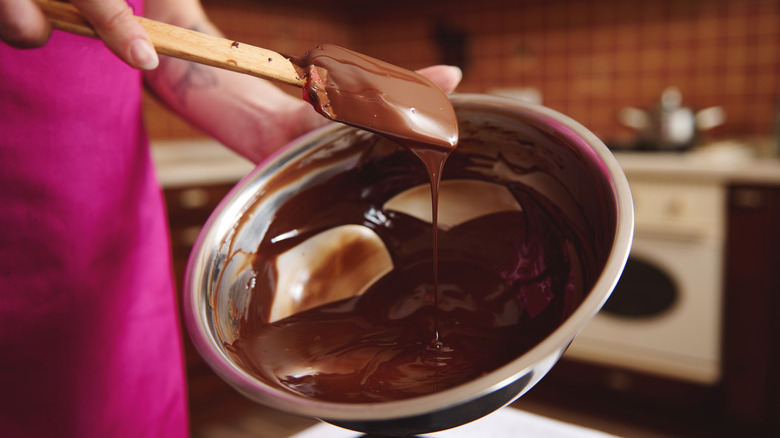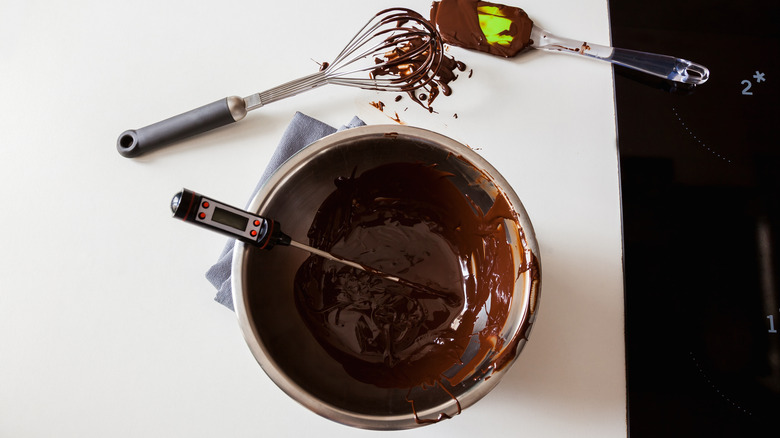How To Easily Temper Chocolate, For The Uninitiated
Tempering chocolate is a crucial step in making chocolate with an attractive look and texture. Tempering yields chocolate with "a snappy, professional-looking finish," according to Alton Brown, scientific hack extraordinaire, on his blog.
Without tempering, chocolate has a lackluster matte appearance and a lower melting point. That is because the cocoa butter in chocolate crystalizes into six possible shapes, which affects its texture. Chocolate that is thick and gluey when melted probably has an abundance of form six crystals, and the other crystal forms can make chocolate that breaks apart too easily. Tempering changes the shape of those crystals to form five, creating a workable, dippable, pretty-looking chocolate.
One method of tempering chocolate is called tabling, which involves working melted chocolate with a bench scraper across a marble slab or chilled sheet pan. It is a hassle that is probably enough to prevent you from ever satisfying your chocolate-covered strawberry craving. Instead, look toward the seeding method. Simply stir room-temperature chocolate into melted chocolate to slowly cool it off. You can even melt the chocolate in the microwave.
How to quickly and easily temper chocolate
You will need a knife, cutting board, heat-proof bowl, and rubber spatula. Start by finely chopping your chocolate — smaller pieces help the chocolate melt more evenly and protect against scorching.
If using a double boiler, bring water to a bare simmer in a pot and place a heat-proof bowl on top. The bowl should cover the top of the pot but should not touch the water. The steam provides enough indirect heat to gently melt the chocolate. For more precise results, use an instant-read thermometer to ensure the temperature does not rise above 88 degrees Fahrenheit for dark chocolate and 86 degrees Fahrenheit for milk and white chocolate. Alternatively, melt chocolate in the microwave at 50% power in 30-second intervals, checking the temperature and stirring between each round. If the temperature does rise above the targeted limit, remove the melting chocolate from the heat and stir vigorously to cool it down.
Once the chocolate has melted, add two-thirds of your chopped chocolate to the bowl and stir quickly and continuously to melt. This agitation helps form stable crystalline structures. Once the chocolate is melted, add the remaining chocolate in three or four batches, stirring to combine each time. The seeding process slowly cools and stabilizes the chocolate. While it requires a little patience, this technique is very straightforward so that you can make all the chocolate confections and fancy desserts your chocolate-loving heart desires.


